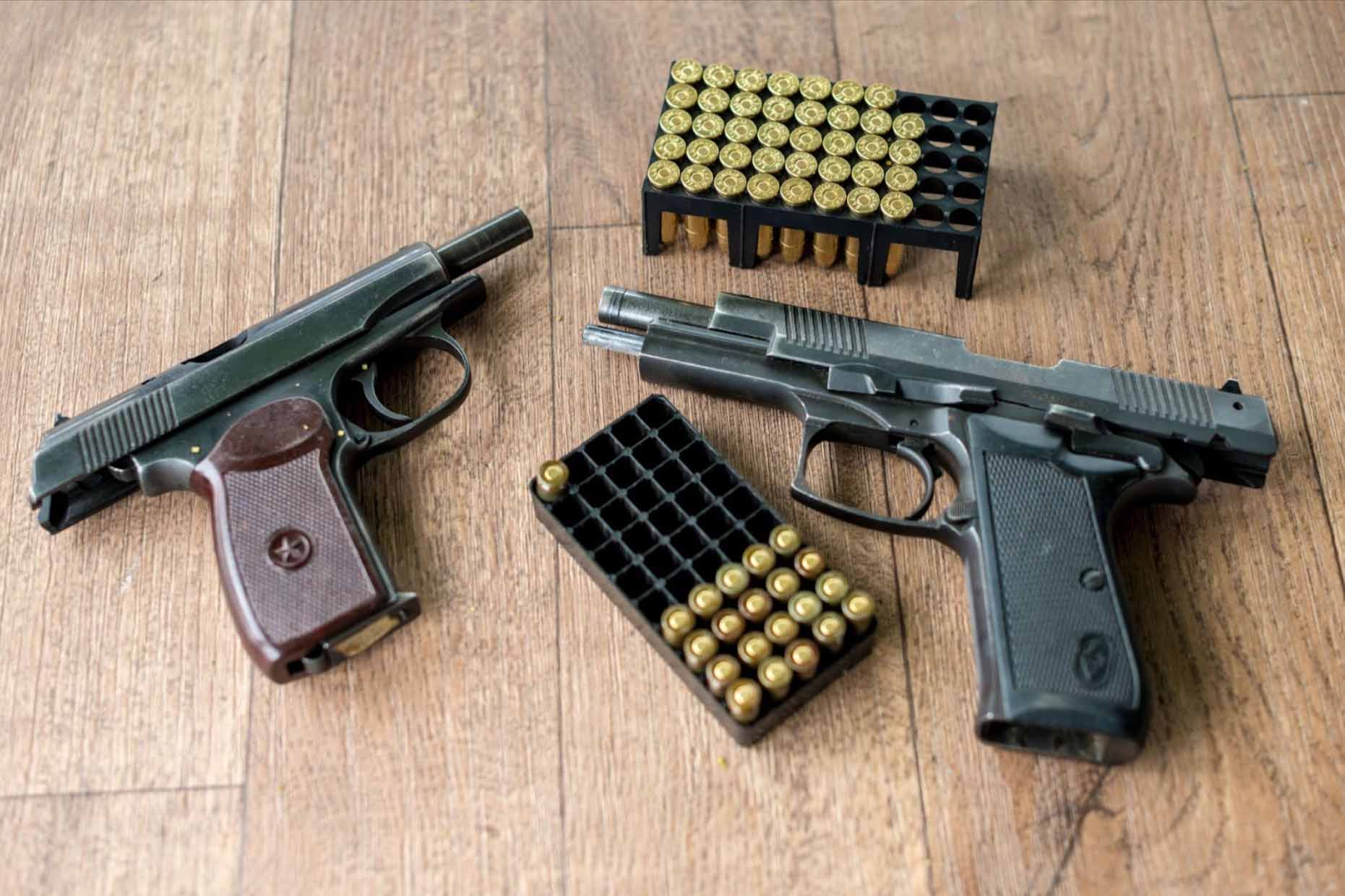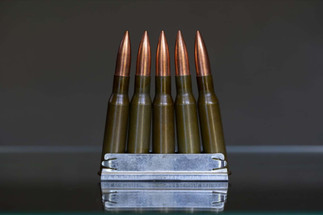Jun 24th 2024
What Is a Clip on a Gun Used for?
What Is a Clip on a Gun Used for?
Gun clips are essential components in firearms, significantly influencing the efficiency and speed of reloading. For gun owners and enthusiasts, a comprehensive understanding of gun clips can elevate the safety and performance of their shooting experiences. These seemingly simple yet crucial devices boast a rich history and are relevant in various applications today.
Defining the Clip on a Gun
A gun clip is designed to hold multiple rounds of ammunition together, facilitating more accessible and faster loading into a firearm. Unlike a magazine, which feeds ammunition into the chamber through an internal mechanism, a clip holds the rounds to allow them to be quickly transferred into the firearm's magazine or chamber. Clips are generally more straightforward in design and can be made from metal or plastic, depending on their specific application. They are handy for reducing reload times and improving the efficiency of shooting.
Gun Clips vs. Magazines
Understanding the difference between gun clips and magazines is crucial for anyone handling firearms. A clip holds multiple rounds of ammunition together and is typically used to quickly load these rounds into a magazine. Conversely, a magazine is an enclosed container that feeds ammunition into the firearm's chamber through a spring and follower mechanism. The primary distinction lies in their function: clips are for holding and loading, while magazines feed ammunition into the firearm. This differentiation is often misunderstood, leading to miscommunication and errors in firearm handling.
Historical Context of Gun Clips
Clips on guns have a rich history, evolving significantly over time. Their development was driven by the need for faster reloading during combat, leading to innovations that enhanced the efficiency of firearms. During World War I and II, clips played a vital role in military operations, with the en bloc clip used in the M1 Garand being a notable example. Quickly reloading and continuing firing was a significant advantage in combat situations.
Historically, clips also saw extensive use in bolt-action rifles, where stripper clips enabled soldiers to reload swiftly during engagements. The design and use of gun clips have continued to evolve, adapting to modern firearms and the needs of contemporary shooters.
Practical Applications of Clips on a Gun
Clip on a gun is still used for specific purposes and types of guns in modern firearms. Stripper clips are ordinary in surplus military rifles and some modern bolt-action and semi-automatic rifles. En bloc clips are unique to weapons like the M1 Garand, which remains popular among collectors and historical shooters. Moon clips are prevalent among revolver users, particularly those chambered for semi-automatic cartridges. They are favored in competitive shooting for speeding up reload times.
Proper handling and storage are essential for effectively using and maintaining gun clips. Users should ensure clips are clean and free of debris to prevent malfunctions. Regular inspection for wear and tear is essential, especially for metal clips that can bend or break over time.
Types of Clips on a Gun
Understanding the various types of gun clips is essential for effective firearm use and maintenance. Different clips serve unique purposes and are compatible with specific firearms, influencing their operation and performance. Below are the primary types of gun clips, detailing their design and use.
Stripper Clips
Stripper clips are simple metal strips that hold a series of cartridges by their rims. They are designed to be placed over the firearm's magazine, allowing users to quickly push the rounds into the magazine with their thumb. This method significantly speeds up the reloading process, especially in bolt-action rifles and some semi-automatic rifles. Stripper clips are durable and reusable, making them a practical choice for many shooters.
En Bloc Clips
En bloc clips hold multiple rounds of ammunition together. They are designed to be inserted directly into the firearm's magazine well. In this setup, the entire clip goes into the gun, and rounds are fed into the chamber until the clip is empty. Once the last round is chambered, the clip is ejected from the firearm. The M1 Garand is a notable example of a rifle that uses en-bloc clips, contributing to its rapid reloading capability during service.

Moon Clips
Moon clips are designed to hold rimless cartridges together, facilitating simultaneous loading and unloading in revolvers. They fit into the revolver's cylinder, ensuring all rounds are correctly aligned and ready to fire. The entire clip can be ejected when the rounds are spent, allowing rapid reloading. This design mainly benefits revolvers using semi-automatic cartridges, ensuring reliable operation and quick ammunition replacement.
Speed Loaders
Although not traditional clips on a gun, speed loaders serve a similar purpose by holding a complete set of rounds in a configuration that matches the revolver's cylinder. These devices allow for the rapid insertion of all rounds into the cylinder simultaneously, significantly reducing reload times. Speed loaders are commonly used in revolvers for both tactical and recreational shooting. They are typically made from plastic or metal and are valued for their reliability and ease of use.
How Clips on a Gun Work
Gun clips' functionality varies with design, but all aim to streamline reloading. Each type of clip operates uniquely and is suited to the specific firearm requirements it is designed for. Understanding the mechanism behind every gun clip helps you choose the right one for your needs and ensures proper usage.
Stripper Clips Mechanism
Stripper clips operate by holding a series of cartridges in a single strip. The user places the clip over the magazine and pushes the rounds down into the magazine with a single motion. This quick and efficient process makes it ideal for bolt-action and semi-automatic rifles. Stripper clips are handy in situations requiring rapid reloading, such as in military or competitive shooting environments.
En-Bloc Clips Functionality
En bloc clips hold the ammunition together as a single unit inserted directly into the firearm's magazine well. When using an en bloc clip, the entire clip goes into the gun, aligning the rounds for feeding into the chamber. As the firearm cycles, rounds are chambered one by one until the clip is empty. At that point, the clip is ejected, allowing for a quick reload with a new clip, thus enhancing the firing rate.
Moon Clips Role
Moon clips are designed to hold rimless cartridges together, facilitating simultaneous loading and unloading in revolvers. They fit into the revolver's cylinder, ensuring all rounds are correctly aligned and ready to fire. The entire clip can be ejected when the rounds are spent, allowing for rapid reloading. This design mainly benefits revolvers using semi-automatic cartridges, ensuring reliable operation and quick ammunition replacement.
Speed Loaders Operation
Speed loaders function by holding a complete set of rounds in a configuration that matches the revolver's cylinder. To reload, the user aligns the speed loader with the cylinder, releases the rounds into the chambers, and removes the loader. That allows all chambers to be loaded simultaneously, drastically reducing reload time. Speed loaders are favored for their ease of use and efficiency, making them popular among both tactical shooters and recreational gun owners.

Advantages of Using a Clip on a Gun
Gun clips offer several notable benefits that enhance the shooting experience. Their design promotes faster reloading, a critical advantage in high-pressure scenarios such as combat or competition. Additionally, clips are simple to use and maintain, providing reliability and ease of handling.
Speed of Reloading
Clips are designed to streamline the reloading process, significantly reducing the time it takes to load ammunition into a firearm. That is especially advantageous in high-pressure situations like military combat or competitive shooting. The ability to quickly reload can make a critical difference in maintaining operational readiness and performance. Clips facilitate faster transitions between empty and loaded states, enhancing shooting efficiency.
Simplicity
Gun clips are typically more straightforward in design compared to magazines. Their uncomplicated structure makes them easier to use and maintain, which benefits novice and experienced shooters. Simplicity in design also translates to fewer mechanical issues, reducing the likelihood of malfunctions during use. This reliability can be a significant advantage when consistent performance is essential.
Cost-Effective
Clips are generally more affordable to produce and purchase than magazines. This cost efficiency makes them an attractive option for shooters who need to equip multiple firearms or stockpile ammunition. Lower costs also mean clips can be easily replaced if lost or damaged without significant financial burden. This economic benefit is particularly relevant for large-scale operations or budget-conscious enthusiasts.
Disadvantages of Using a Clip on a Gun
Despite their benefits, gun clips have
certain drawbacks that can impact their effectiveness. Limited ammunition capacity requires more frequent reloading, which can be a disadvantage in prolonged engagements. Furthermore, compatibility and durability issues can restrict their use and necessitate careful maintenance.
Limited Capacity
One of the primary drawbacks of gun clips is their limited ammunition capacity compared to magazines. Clips typically hold fewer rounds, requiring more frequent reloading, which can be a disadvantage in extended shooting scenarios. This limitation can hinder continuous shooting, especially when high-capacity magazines are preferable. The need for multiple clips can also add to the logistical complexity of ammunition management.
Compatibility Issues
Not all firearms are designed to use clips, limiting their utility to specific models and types of guns. This incompatibility means that shooters must ensure their firearms are compatible with clips, which can be restrictive. Additionally, clips for certain guns may be limited, making them harder to acquire. This constraint necessitates careful consideration when choosing firearms and their respective reloading mechanisms.
Less Durable
Clips, particularly metal ones, can be prone to bending, warping, or breaking over time. This lack of durability compared to magazines can lead to reliability issues and the need for frequent replacements. The wear and tear on clips can also affect their performance, potentially causing reloading malfunctions. Ensuring clips are adequately maintained and handled carefully is essential to mitigate these durability concerns.
While clips offer benefits such as speed, simplicity, and cost-effectiveness, they also come with limitations like capacity, compatibility, and durability issues. Weighing these factors allows for better decision-making and enhances overall shooting experiences.
The Vital Role of Clips on a Gun
Knowing what a gun clip is and its uses is fundamental for anyone involved in firearms. Clips are integral to the efficient operation of certain guns, offering benefits like faster reloading and simplicity. Recognizing the differences between clips and magazines prevents misunderstandings and promotes better communication among gun enthusiasts. Gun clips' historical significance and evolution highlight their enduring value in military and civilian contexts. Knowledge about gun clips and their practical applications is indispensable for responsible and effective firearm use.
For an in-depth guide on gun clips, visit our Gunline Shooting blog page and enhance your firearm knowledge and performance today.

